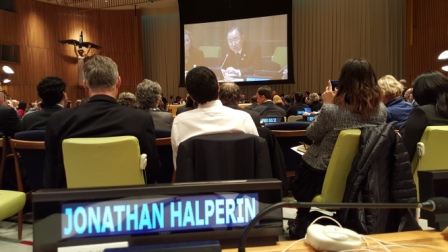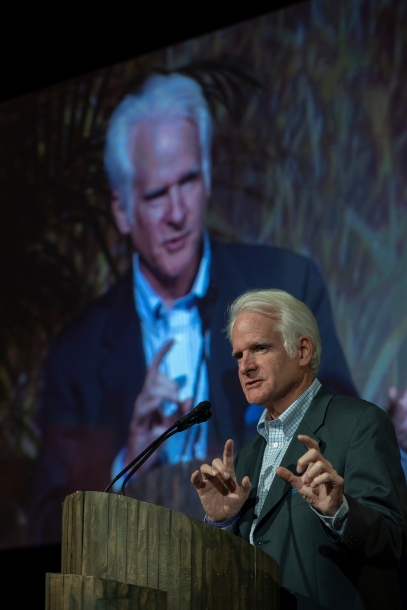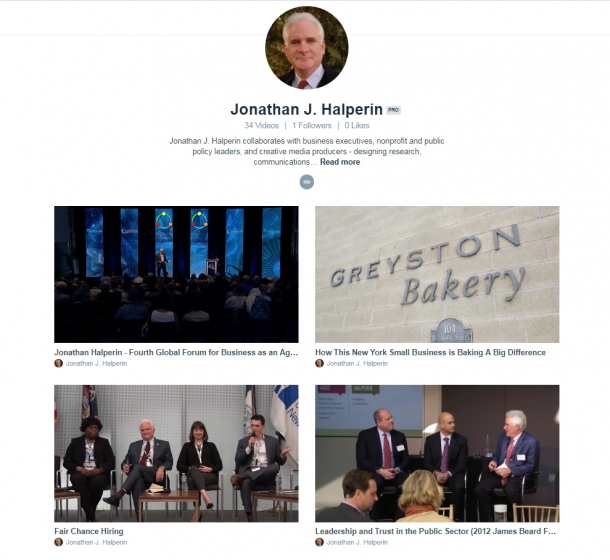You are here
What Does Change Look Like?
Across the American presidential campaign landscape, change might look like a neo-fascist with a toupee, a scrappy septuagenarian democratic socialist, or the familiar face of a woman who might become our first female president. Quite a spectacle we present to the world.
Off the campaign trail and within the US government, change is both afoot and being cemented as fast as possible. As the game-clock winds down, officials are working both to drive change quickly and to solidify progress already made. As discussed by Agriculture Secretary Tom Vilsack at a recent White House gathering, Tomorrow’s Table, revitalizing local and regional agricultural systems is not just about food and farming but about the American way of life: core values, tradition, and community.
Part of America’s greatness surely stems from what Alexis de Tocqueville described in 1840 as an American propensity to “seek each other out and unite together to … found seminaries, build inns, construct churches, distribute books, dispatch missionaries … [and] establish hospitals, prisons, schools by the same method.” How we fund these quintessentially American activities, now understood as philanthropic endeavors designed to enhance the public interest, has changed dramatically. For example, Mark and Chan Zuckerberg recently announced that their charitable work would be funded and carried out through the “donation” of $45 billion to a limited liability corporation rather than a nonprofit.
As a trustee of the comparatively microscopic Marcus Foundation, I am very pleased that we will be joining forces with dynamic philanthropic leaders within the Sustainable Agriculture and Food System Funders group. While grants of necessity often go to discrete projects at specific organizations, foundations do have the leverage to advance collaboration around systemic problems and opportunities.
Whether in food or water or the search for climate stability, business too is adapting to and in some cases leading change. At the 2016 Investor Summit on Climate Risk, business leaders did not gather at the UN to hear Michael Bloomberg talk about philanthropy but rather about business opportunities in the transition to a low-carbon economy – which also explains why the event was sponsored by JPMorgan Chase, Morgan Stanley, KKR, and Deutsche Bank (among others).
 Participating at the United Nations in the Investor Summit on Climate Risk
Participating at the United Nations in the Investor Summit on Climate Risk
as Secretary General Ban Ki-moon addresses
the audience of business and public policy leaders.
We will continue that discussion next week at a meeting in Washington, DC, of corporate EHS and sustainability directors, exploring the extent to which the Paris climate agreement portends fundamental shifts not just in policy but also for business. A coalition of global business leaders led by CERES was key to the ambitious agenda that came out of the Paris talks.
If energy – whether measured as kilowatts or calories – has always been central to the human condition it may be premature to declare the end of the fossil fuel era; but clearly we are at the beginning of the end of that era. Fundamental chemical and geologic forces at work behind the climate instability we are now experiencing will continue to unravel life as we have come to know it in recent times.
If our canine friends can sense physical earthquakes before they happen and detect explosives in suitcases, surely we should be astute enough at the pinnacle of the food chain to detect the tectonic shifts taking place within the ecosystems on which all life depends. Colony Collapse Disorder has decimated honeybees, a critical natural pollinator of everything from cucumbers to watermelons. And while they have inhabited the earth for some 300 millions years, the decline in frog and other amphibians has accelerated at alarming rates, with more than 150 species extinguished in the last 20 years and declining populations among nearly 2,500 species of amphibians.
Reaching “across the aisle” in Washington to get things done has been a truism of American politics for many a generation. Today the aisle has become a chasm.
While American history may be rich with acts of independence, our future is more likely to be effectively secured through outrageous acts of interdependence – be they within bio-diverse regions where stakeholders compete and species are threatened, along global supply chains, in partnerships between incumbent actors and entrepreneurial start-ups in the food sector, or among philanthropists and investors.
- jonathan.halperin's blog
- Log in or register to post comments

